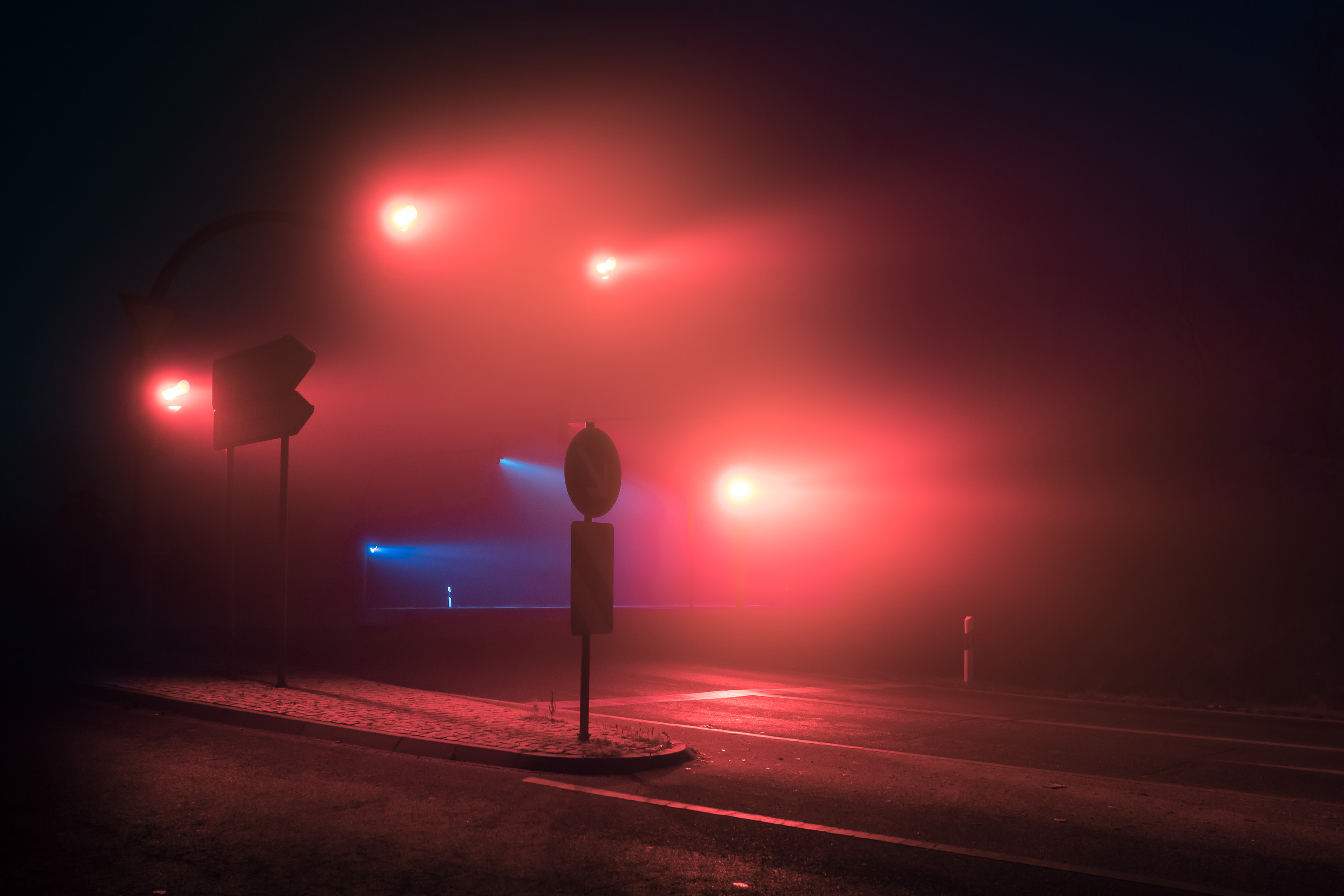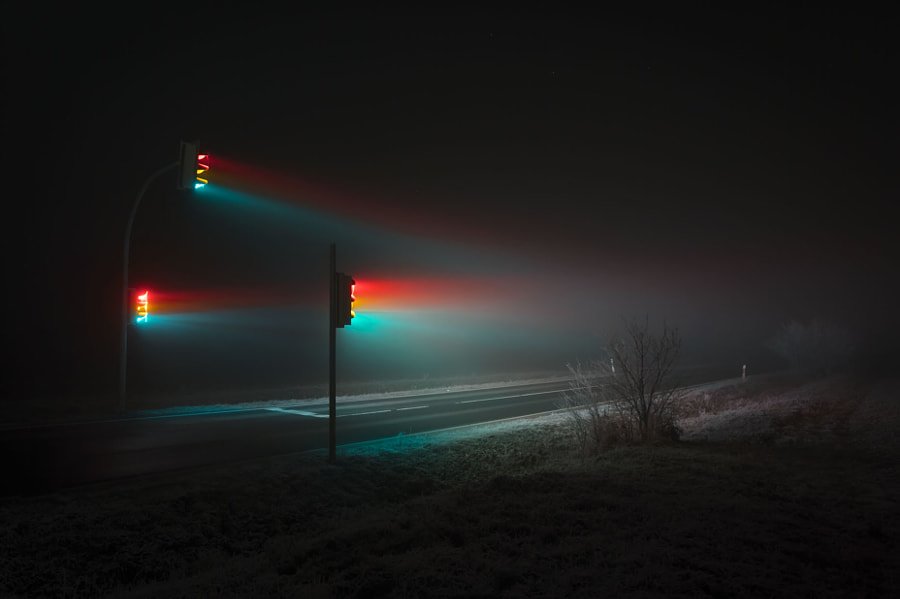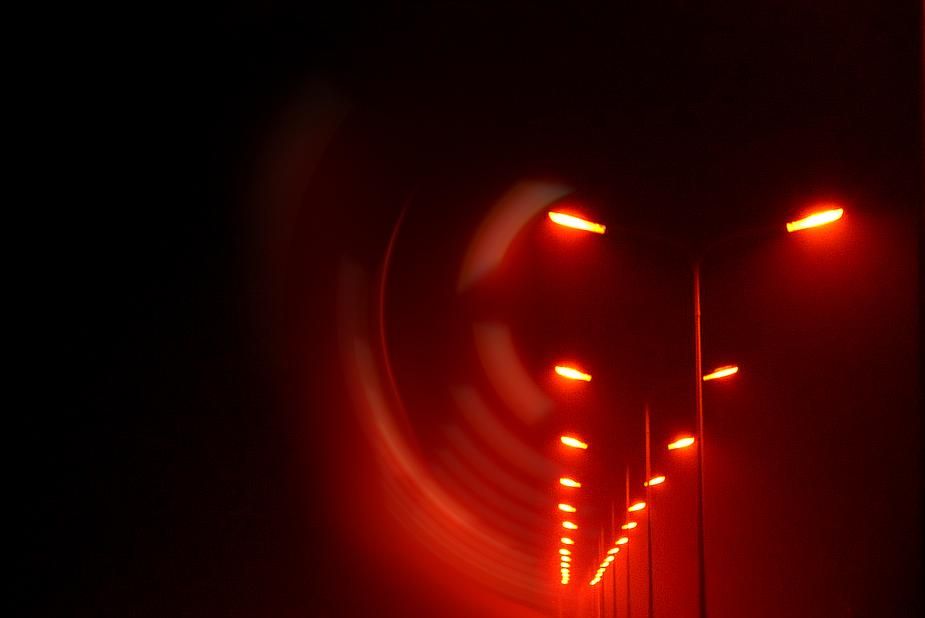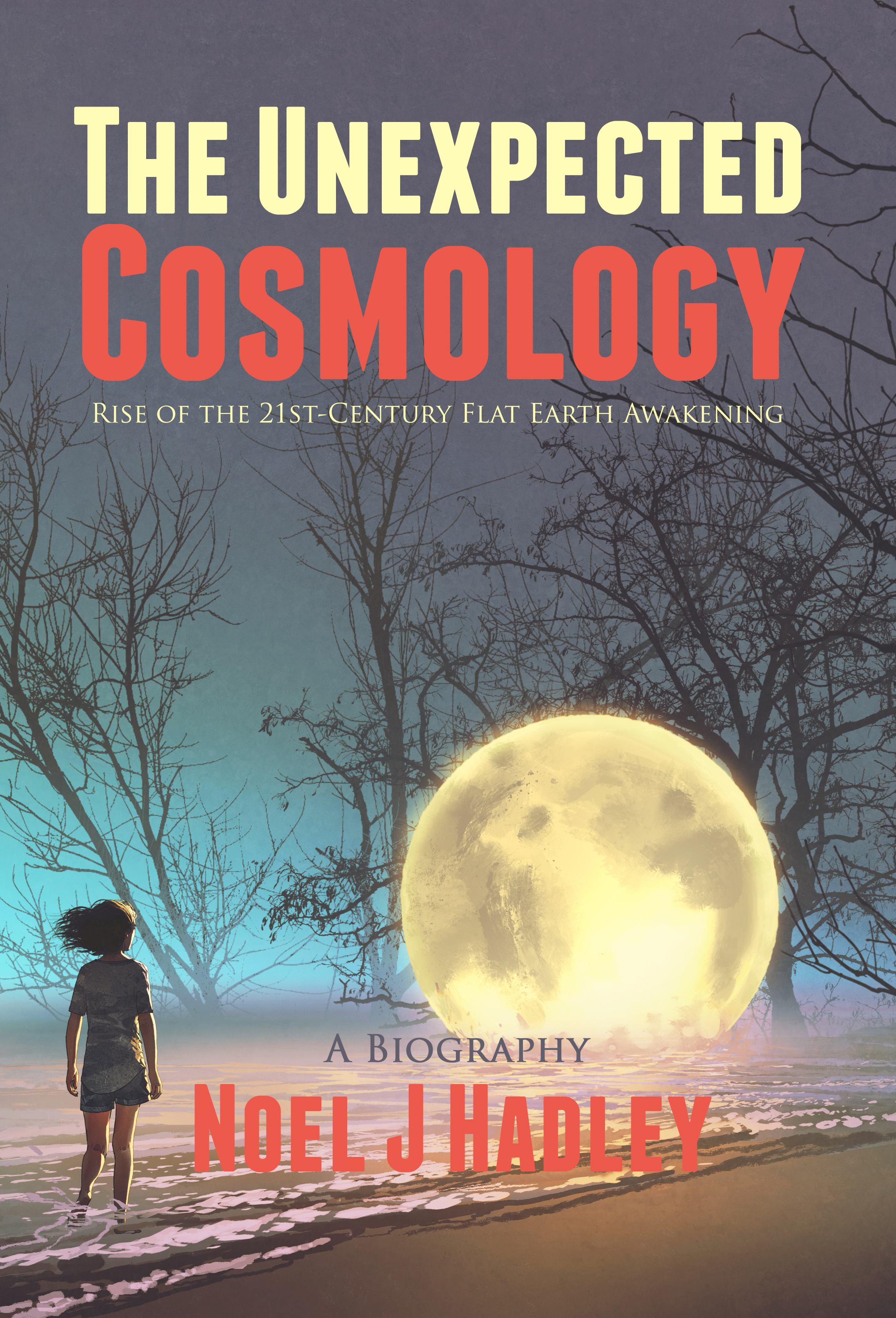The DEADHEAD & the Great Mystery of God | Travels with Zen Garcia
1
HE WAS A MARTIAL ARTIST AND A POET, and then finally one day in the spring of 1992 it occurred to twenty-one year old Zen Garcia that he was trapped behind four walls too many, and the view through his window was lacking. After abandoning church as a teenager he tried his hand at atheism with little success, but desert portraits and mountainous landscapes were something he could commit to. “Most people’s lives keep them separated from what is the great mystery of creation and God,” he explained over the phone, “and that deeper more profound understanding. And so inherently I wanted to break my routine and to get away from the whole corporate 9 to 5.”
Zen Garcia sold everything.
As proof of his determination, he published his very first book, a collection of poetry called, Look Somewhere Different. And that’s exactly what Zen was going to do.
Look.
Somewhere.
Different.
But he’d need a car first—preferably a van.
After finding one such contender, he dropped in a new engine and transmission and then hit the open road, pressed to the decision that he was going to take that fork in whichever direction the spirit led him.
“Wait, what kind of van was it?” I asked.
“It was a…” Zen stopped to ponder that fact. “80—no, I forget the year.” He thought harder. “No wait…” He paused again. “It was an 88 Ford Windstar Van. Actually…” Clearly, the specifics of his van bothered him. “I think it was called an Aerostar Van before the Windstar.” But getting back to the entire point of his story, being, “I had enough money coming in for two or three years that I could get to wherever I need to go.”
“And besides,” he added, “I always had martial arts to fall back on.”
Instead, the man from Atlanta learned to become a master of snowboarding.

2
HIS VERY FIRST STOP WAS NEW MEXICO, a drive he took with his father in order that they might see his grandmother before she was gone. He remained there until her passing.
The painted deserts of Arizona soon welcomed him—specifically Sedona. Zen paused for Zion; Mesa Verde in Colorado; the Anasazi cliff dwellings; until finally “the redwood highway, the whole redwood giant sequoias up above, north of San Francisco—the valley of the giants,” opened up and spread out before him, like something from a Simon and Garfunkel song. “And so I lived in a van for four years and traveled slowly across America, lived everywhere, and basically was seeking to have experience of the divine, to come to a deeper knowledge of God.” He would take the Pacific Coast Highway all the way to Seattle.
It was in Seattle, he said, where his girlfriend waited for him.
“Most people don’t know this, but the top of Mount Rainier is called Paradise. In the book I had published,” Look Somewhere Different, “I had told her I was going to take her to Paradise. And so as we were driving to Rainier, there were signs which read: 50 miles to Paradise, 10 miles to Paradise.”
Zen leaned over to his girlfriend and smirked.
“Didn’t I tell you I was going to take you to Paradise one day?”

3
FROM MOUNT IDAHO HE THEN DROVE EAST across Montana and headed south for Yellowstone. But it was Jackson Hole that nibbled at the appetites of his heart, and eventually nabbed his undying attention.
“If you’re not familiar with Jackson Hole, those mountains come right off the valley floor and rise up 14,000 feet into the air. They’re beautiful and incredible, and there’s only 5000 people that live there during most of the year. There are more animals there than people. And it reminds me of Africa because there are literally tribes of all this wildlife, and huge herds of deer and mule deer and elk and bison and wolves and coyotes and pumas. It’s just incredible. And the animals rule there. The people are very few and far in-between. And they’re only limited to one small place, whereas you have the Teton Mountains right there, and that is back to back with Yellowstone right above it. And so you have a huge swath of area which is completely unpopulated. The animals have full roam and full reign.”
Jackson Hole, he said, is civilization on the edge of wilderness. “There isn’t another town until you get to west Yellowstone.”
Zen was driving through the Tetons when all of a sudden break lights barked in front of him. Everything came to an obstinate standstill. “People were getting out of their vehicles,” he said. So naturally he walked up to the front of the line with the rest of them to see what the commotion was—hoping that nobody had died. “There was a moose lying out in the road, blocking off both lanes of traffic. He was just chilling, and people were out taking pictures of him. He was so huge.” Zen beamed with delight while evoking the memory. “Those animals are so huge. But he was blocking both sides of the road.”
Progress would have to wait on standby until nature was good and ready. That was Jackson Hole, Wyoming; civilization on the edge of wilderness—exactly how Zen liked it. America had much to offer, but when he happened upon the Tetons, Zen had finally found the paradise he was looking for. “I decided to spend my winters there, and ended up working on the mountain as a liftee. And that’s when I learned to snowboard. That was the most incredible place, and the most incredible experiences that I ever had.” His girlfriend decided to join him.
Once again, Zen simpered with the recollection.
“We had an incredible winter there.”

4
EVENTUALLY, AS THE SNOW BEGAN to thaw in Jackson Hole, Zen Garcia turned his attention to other horizons. He had already adapted Native American traditions for answers—and shamanism, “because I felt like the people were really spiritual people, and they still held onto a way of life, and through teachings which were outside of the realm of the corporate 9 to 5 and all of that. They did dances and pow-wows and sweat lodges, which was a really key tool for me. Vision quest, drumming, those kind of things are tools which they traditionally use to put someone into a mindset where you are in a space where you are communing with what I felt was the godhead. And I felt I did not know the Son. I only knew the Father.”
The blending of the two—first his ongoing exploration of America’s natural furnishings, whenever the temperate spring or autumn weather enticed him, matched with his pursuit of indigenous spirituality, quickly found application, and practicality, while following the Grateful Dead.
The Dead made their debut at Ken Kesey’s acid tests in the 1960’s. By 1967, they emerged as leaders of the Haigh-Ashbury music scene right alongside Jimi Hendrix and Janis Joplin. The Deadhead phenomenon was soon thereafter first commented upon by Village Voice music critic Robert Christgau while at a Felt Forum show in 1971, noting “how many regulars seemed to be in attendance, and how, from the way they compared notes, they’d obviously made a determined effort to see as many shows as possible.” Bob Weir later told David Letterman in 1984 that the term Deadhead came about because speed heads, acid heads, and grass heads were already taken. If Dead fans found appeal in repeated concert attendance, it is likely first and foremost due to the method in which the band structured their nightly concerts with multiple sets and repeated song selection changes, sometimes starting out acoustic for the first half before plugging it in and amping it up for the second. By the 1980’s their two-set shows often included a prolonged drum solo by Mickey Hart and Bill Kreutzmann, followed by an extended improvisational “space” jam played by the rest of the band.
But more than anything, Dead shows manifested the very sort of non-organized religious experience which thousands of middle-class teenagers, mostly Caucasian, had thronged towards, but which was typically confined momentarily in time and among immovable, even unpredicted places like Woodstock and the Haight. Among the tents and tee-pees and flowery buses of migratory Dead camps, young minds could experience places of consciousness among colorful tapestries of psychedelia and the passing of joints, tapping into spiritual wells long thought lost in the Manifest Destiny blitz of their American forefathers.
“It makes me feel larger than life,” a young woman told Brian O’Donnell for his 1991 documentary, Deadheads, while seated on the ground, speaking carefree as the breeze; “like something incomparable to anything I am able to find anywhere else.”
Jerry Garcia’s biographer, Blair Jackson, wrote that the shows were the sacrament, “rich and full of blissful, transcendent musical moments that moved the body and enriched the soul.” Bass guitarist and Dead founder Philip Lesh commented, “The unique organicitiy of our music reflects the fact that each of us consciously personalized his playing to fit with what others were playing and to fit with who each man was as an individual, allowing us to meld our consciousness together in the unity of a group mind.” And drummer Mickey Hart is documented as having said: “The Grateful Dead weren’t in the music business; they were in the transportation business.”
Joseph Campbell once proclaimed Deadheads as “the world’s newest tribe.” That tribe was just over two decades old when, in 1994, Zen Garcia joined its ranks.
During the 1970’s, second generation Deadheads, some homeless, others occasionally jobless, who are also said to have been turned on to the music through their elder brother’s friends, had begun selling t-shirts, posters, veggie burritos, and other items at the concert, Mardi grass beads, homemade bracelets and earth-inspired jewelry, bumper stickers, hot dogs and chili nachos, in order to sustain the lifestyle. Deadheads of Zen Garcia’s 1990’s fit many of the same demographics as their surrounding grunge-fueled x-generation contemporaries, for the most part—young, white, angst driven males deriving from middle-class neighborhoods. The mud and the beer people, as they called themselves at Woodstock’s thirtieth anniversary, would wildly distance themselves from their peace loving hippie counterparts, irreconcilably so, by burning the grounds down in 1999, had already begun to manifest among Deadheads as the Clinton administration trudged on. This was particularly evident at Dear Creek, near Indianapolis when, in July 1995, rioters crashed gates and tore the venue down.
Living the life of a carny wasn’t only a way to make easy money, Zen said. It was “also a way to have a really good time doing music. You could sell food. I had friends that sold t-shirts. All I had to do was get to a show and we could make money; enough money to survive to get to the next show, and also to get into the show and have a really good time—to be part of this whole misfit group. But they were also very spiritual people, and it was there doing all these Grateful Dead shows that I was introduced to a lot of spiritual techniques, different things, sweat lodges and the Native American tradition was really engrained in that part of the culture.”
He and his friends always planned to meet in one particular section of the concert. “And that was on the side where Jerry Garcia played, which was on the right side of the stage. That was one of our ways of always hooking up together, no matter which city we were in.” Jerry Garcia was their rendezvous point. “And back then I was doing drugs, smoking marijuana. And so that’s where we would gather for smoke sessions with other Deadheads. And we would always communally put into a pile, everyone contributed, and then we’d smoke out there during the entire show.”
New York City however, Zen did not care to attend. If Jerry Garcia and company were determined to brave Manhattan, then he’d happily flank his friends at their next meet-up. “I never wanted to go there—all the people and the noise and the traffic.” He even let his friends in on it. They’d have to find their own ride. Unfortunately the whole lot of them woke up too late, having had far too much fun working Philadelphia in the Spectrum. If his friends were to make it to the city, they’d have to find their luck hitchhiking. Zen had a change of heart.
Get in. Let’s go.
Zen, you’re the greatest.
You guys owe me one.
Zen managed to park his van at a fellow Deadhead’s house in New Haven, Connecticut, with just enough time to finish their journey into the city by train. That train, by the way, came free of charge, Zen claims, courtesy of his well-networked Connecticut friend. Deadheads have many connections, it seems.
After the show, “we always do what we call ground spore.”
“What is ground spore?” I wanted to know.
“It’s basically where we would run around after the show when the lights came on, and you could find stuff that people had dropped. A lot of people were drunk or stoned out of their minds. So there was a lot of stuff that was dropped after the shows. So we’d scatter out and scope the whole stadium.” That night Zen found a tie-dye sweatshirt and a wallet that had $60 dollars in it. “And I found a bag of schwag—marijuana and a bunch of lighters.” Zen took his friends into the parking lot and used the cash he’d found in the wallet to pay the guy who’d gotten him inside.
There was plenty left over for pizza and beer.
“The last train ran at One AM in the morning, and so we knew we had to make it back for the last train.” As Zen happened upon Grand Central Station, he saw a guy dressed in tie-dye, sitting on the ground, leaning against the wall. Tie-Dye looked sad. “He almost had his head in his hands, and he was having a hard time. You could obviously tell.”
Zen roamed over towards Tie-Dye. “Hey brother—is everything okay?”
Everything was not okay.
Tie-Dye sighed.
Nah, man, I lost my wallet in the Grateful Dead show. I’m stuck, man.
“Dude, I found a wallet in the Grateful Dead show.”
Sure enough, the driver’s license matched his mug. He got back all his credit cards, Zen kind of shrugged over the phone. “And because I didn’t have to use my ticket for the train, because of my connection, I gave him that ticket so that he could get back home.” Then again, there was the matter of the money they’d spent. As compensation, Zen offered him the bag of schwag.
Tie-dye was stoked.

5
IT COULD HAVE BEEN ANY CITY IN AMERICA, east coast or west coast. Pick any venue. It may as well have been New York. Zen Garcia was dancing crazy on the right side of the stage with his friends, and so completely in tune with the music, when he looked up and saw that Jerry Garcia was staring right back at him. Neither Garcia missed a beat as they continued locking eyes. “And I knew that we’d made contact in that moment.” For that moment—that brief albeit abiding moment, “I shared a tension with him.”

6
ZEN SAID, “THE EXPERIENCES THAT I HAD at that time, they led me to understand spirituality in a way that wasn’t just book knowledge. It wasn’t just something that somebody talked about in a pulpit. I really had divine experiences in doing what I did in the time that I did that—especially my part in vision questing and sweat lodges and all that. That grounded me spiritually.” After breaking away from the church and turning to atheism, the North American horizon “brought me out of that, and I realized there truly is a Creator, and there’s a purpose for all things to be as they are. Inherently, all of us are here to research and discover that. And so it really led my pursuit of wanting to know, and wanting to have direct experience of something greater. These experiences led me to the person I’ve become.”
In a way, Tie-dye and the case of the missing schwag astonishingly exemplifies Zen Garcia’s worldview, not only the here and the now as we perceive it in a pile of jigsaw pieces, but the yesterday’s before our present being, and in light of that perception, the person he’s become—and more-so, becoming. “I knew in that moment when I met him that this was some sort of crazy angelic encounter, and that God was watching to see if I would do the right thing. And I did so. And I gave him all his stuff back. Things like that would happen to me when I did these sort of shows—supernatural things—just really weird, strange things. It’s always something that worked out for our benefit.”
“My initial life really helped me to have a strong dependence and relationship with the Father, with the Great Spirit—the Father of Creation. It was after that that God led me to the Son.”
However one concludes of the spiritual experience—and I have my views—there is undoubtedly a glaring problem with otherworldliness in its every proposed incarnation, and Zen recognizes that fact. They have a habit of pointing us towards one spirit or the other. “I also feel like, for a lot of people that aren’t spiritually connected to anything, that have turned their backs to Christianity, to organized religion, to everything, and a lot of people are gravitating towards that lie that the aliens created us.” There is Zen’s tug of war; the magnetization towards a fixed, centralized northern pole on the plane or the vast wandering towards a southern pole which charms but ultimately confounds everything within our spiritual map. “There is disinformation that a lot of the Native peoples are involved with. There are spirits that are demonic, in that Satan purposely created a lot of religions and tied them together with drug use in order to lead people astray, in order to lead them into the use of drugs as dependence in their spirituality. In that way, these sorts of things can be terrible for you.”
Zen then corrected himself. “Of course, I don’t use or do drugs now. But I think that, for a certain people, they can be a tool that helps break them out of their shell—out of their mold.”
“The initial experience can drive someone to feel something greater. I think the Native peoples, traditionally, that there use of drugs, peyote, even marijuana for the Rastafarian, that those sorts of things were used to commune with the Father initially. Tools like that can be used to initially break people out of the mold of their tradition.” Consider the sixties. “For the people that went through the whole hippie thing, a lot of those people who used drugs for the first time, they had spiritual experiences which later helped their spirituality, their belief in something greater than themselves.”
Then again, “I think that you have to outgrow and learn to have that sort of connection without dependence on drugs because I think drugs are bad for your health and bad for your wellbeing, in that they can only be used as a tool by some people.”
Thinking back on his travels with the Grateful Dead, “I’m very grateful for what I came out of, and am able now to have discernment, and a lot of people that ask me, if they’re caught up in depression, if they’re abusing marijuana every day, I tell them: ‘Really, you have to outgrow that. You have to learn to leave that behind. You can’t be dependent on something that is destroying you.’ I learned those things early in life. At some point everyone had to grow up and move on and have relationships with the Godhead and leave all things that destroy you; things that poison you; things that affect you in detrimental manner, if you use them over time.”
“And so I’ve been able to relate to people that are involved in New Age mysticism even now, and to help them to understand that there is a Savior Messiah, and why it is that we need to be redeemed through Christ, and that He paid the promise to rectify the Father, and how those two stories come together. And now I’m able to teach the whole thing about the ancient aliens—how it’s all a lie. And I understand more than most people, because I studied the Sumerian teachings, I’ve read all of their mythology. I know how the deception ties into the truth, which is the prophetic Word.”
However one ultimately feels about drug use, even if or when strictly employed as a tool, for Zen Garcia, it may be safe to conclude, there is no sudden revelation, no before or after, that changes everything, so to speak. There is only a series of revelations and the gradual journey, the journey itself, to be taken under consideration. In other words, there is only his life then and his life now. Measurements may be taken by the depths of knowledge acquired in-between.

7
YOU WOULDN’T FORGET A DATE LIKE THIS. It was September 24, 1994. Very soon the biting slopes of Jackson Hole would be calling, but not today. The Grateful Dead were playing in San Francisco, and Zen stood by the edge of the road, hoping to catch a ride, thumb raised.
A van stopped.
He climbed in.
The breaks went out on a winding pass. They dropped off a cliff and plummeted 85 feet.
Zen Garcia snapped his neck on impact.
Noel

This article was a segment from THE UNEXPECTED COSMOLOGY: Rise of the 21st-Century Flat Earth Awakening, and is now on sale on Amazon and eBay.
Signed copies at Sacred Word Publishing: THE UNEXPECTED COSMOLOGY (1st edition signed)
Paperback copies on Amazon: THE UNEXPECTED COSMOLOGY (1st edition)
E-book copies on Amazon: THE UNEXPECTED COSMOLOGY